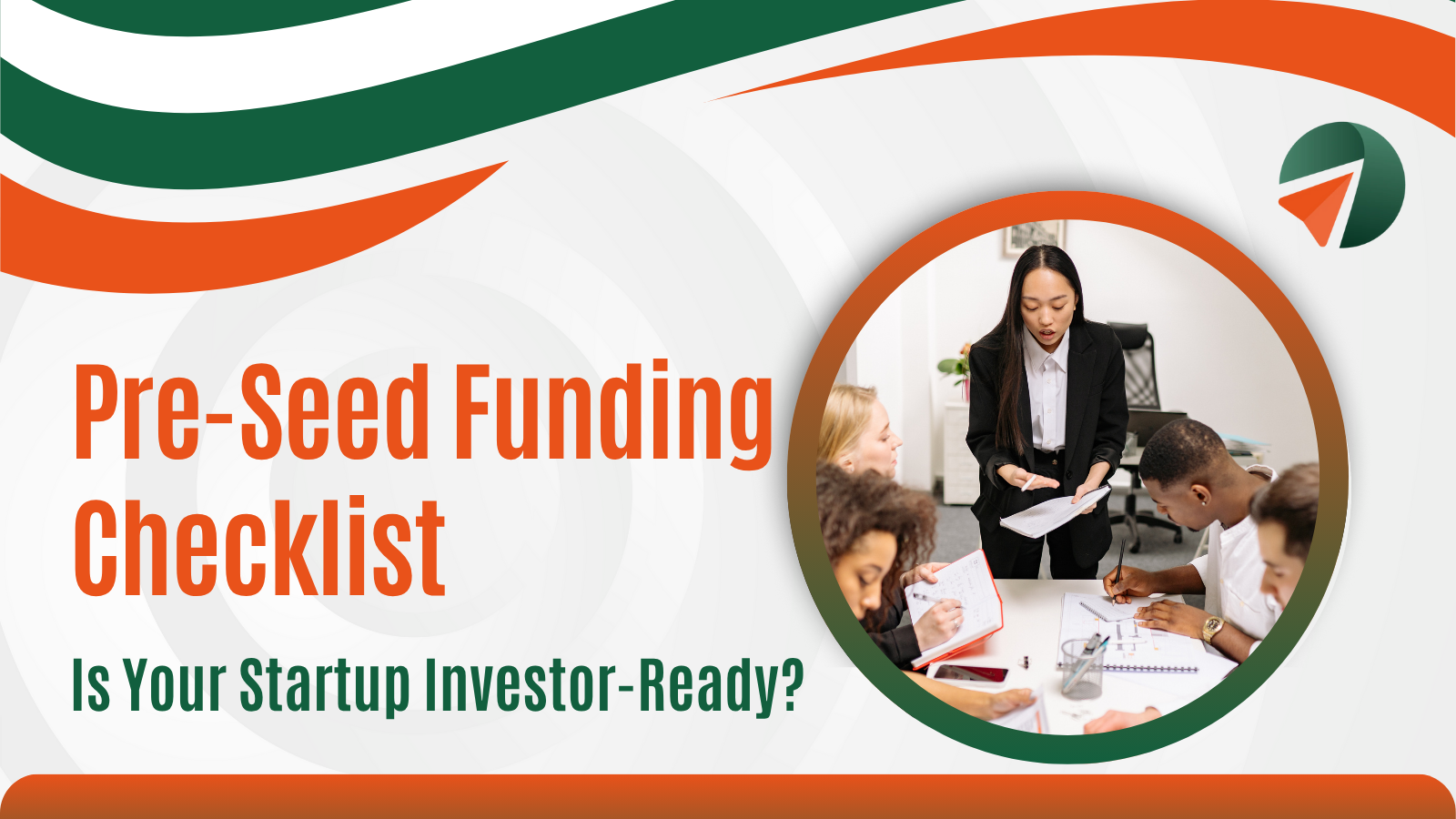Securing pre seed funding is usually the initial significant outside confirmation for a startup. It can turn an idea into a sustainable business, allowing founders to build products, recruit early teams, and validate their assumptions about the market. However, most first-time founders charge into fundraising without assessing whether they’re really prepared. The outcome? Time wasted, equity diluted, and growth put on hold.
This blog presents a practical guide to prepare your startup for pre seed funding and impress investors.
1. Define a Clear Problem and Solution
Investors are not investing in ideas—they invest in solutions to genuine problems. Ensure that before pre-seed funding, you can define:
- The problem addressed by your startup.
- Why current solutions are not good enough.
- How your solution specifically bridges the gap.
A brief, effective story will leave your pitch memorable and investor ready.
2. Create a Prototype or Minimum Viable Product
Although pre-seed funding doesn’t require a fully built-out product, having a Minimum Viable Product (MVP) works to show traction and proof of concept. Examples of an MVP can include:
– A functional app or website,
– A physical prototype,
– A pilot or test with early adopters.
Any way to prove to investors that your idea works, even if only on a limited and tangible level, gives some validation to your idea and decreases the risk to them.
3. Understand Your Market Size
Understanding your market size, and who your customer is, is very important to do, and investors will want to know that this startup has some opportunity to scale. To clear up any ambiguity, you should be prepared to answer:
- Who are your target customers?
- What is the total addressable market (TAM) size?
- What is the growth-driving trends within this market?
Quantitative information here solidifies your pitch and indicates that your startup has growth potential.
4. Show Early Traction
Even at the pre-seed level, investors seek proof that your startup has traction potential. This might be:
- Early adopters or pilot clients
- Sign-ups, downloads, or web traffic
- Letters of intent (LOIs) or pre-orders
Numbers don’t have to be enormous—growth potential and consistency are more important than raw numbers.
5. Get the Right Team
Investors tend to claim that they invest in teams rather than ideas. Founding team strength becomes a stronger factor at the pre-seed level than product metrics. The highlights are:
- Founders’ relevant technical expertise
- Complementary skill sets (tech, marketing, operations)
- Commitment and flexibility to learn
A quality team is evidence of execution capability, which is of paramount importance to investor trust.
6. Develop a Strong Pitch Deck
Your go-to communication device is a strong pitch deck. Keep it short (10–15 slides) and address:
- Problem & solution
- Market opportunity
- Product/MVP
- Business model
- Traction & metrics
- Team
- Funding needs & spend
- Visuals, narrative, and data win over long paragraphs.
7. Know Your Funding Needs
Even pre-seed, you want to be clear on how much funding you require and how you’ll be spending it. Pre-seed allocations tend to be:
- Product development
- Marketing & user acquisition upfront
- Hiring initial team members
- Costs of operations
Don’t ask for amorphous amounts. A detailed breakdown indicates responsibility and strategy.
8. Identify Suitable Investors
Not all investors will be the best fit for your pre-seed startup. Consider:
• Business angels or micro-VCs in the space of your industry
• Investors who have experience investing in early-stage businesses
• Networks that provide mentorship and/or references
Finding investors whose interests align with your startup vision will improve your likelihood of success.
9. Prepare for Due Diligence
Even at pre-seed, investors do preliminary due diligence. Have ready:
- Founding documents & equity structure
- Intellectual property (IP) protection
- Market research or pilot results
- Legal compliance (if applicable)
Organization shows professionalism and minimizes friction during negotiation.
10. Validate Your Commitment
Lastly, investors wish to see founders committing wholeheartedly. Pre-seed funding is risky, and your indication of willingness to invest time, resources, and energy conveys seriousness.
Ask yourself:
- Am I prepared to iterate and pivot upon feedback?
- Can I commit long-term if the product requires several iterations?
- Do I possess the grit to ride through uncertainty?
- Your mindset is as important as your metrics.
Final Thoughts
At the pre-seed stage, you’re not merely marketing an idea, you’re marketing proof-of-readiness, proof-of-execution, and proof-of-scaling. These checklists provide a useful way for entrepreneurs to gauge readiness, narrow gaps, and present a straightforward case for investment.
Keep in mind too, being prepared breeds confidence, reduces mistakes, and increases your chance of closing your first round of capital.






